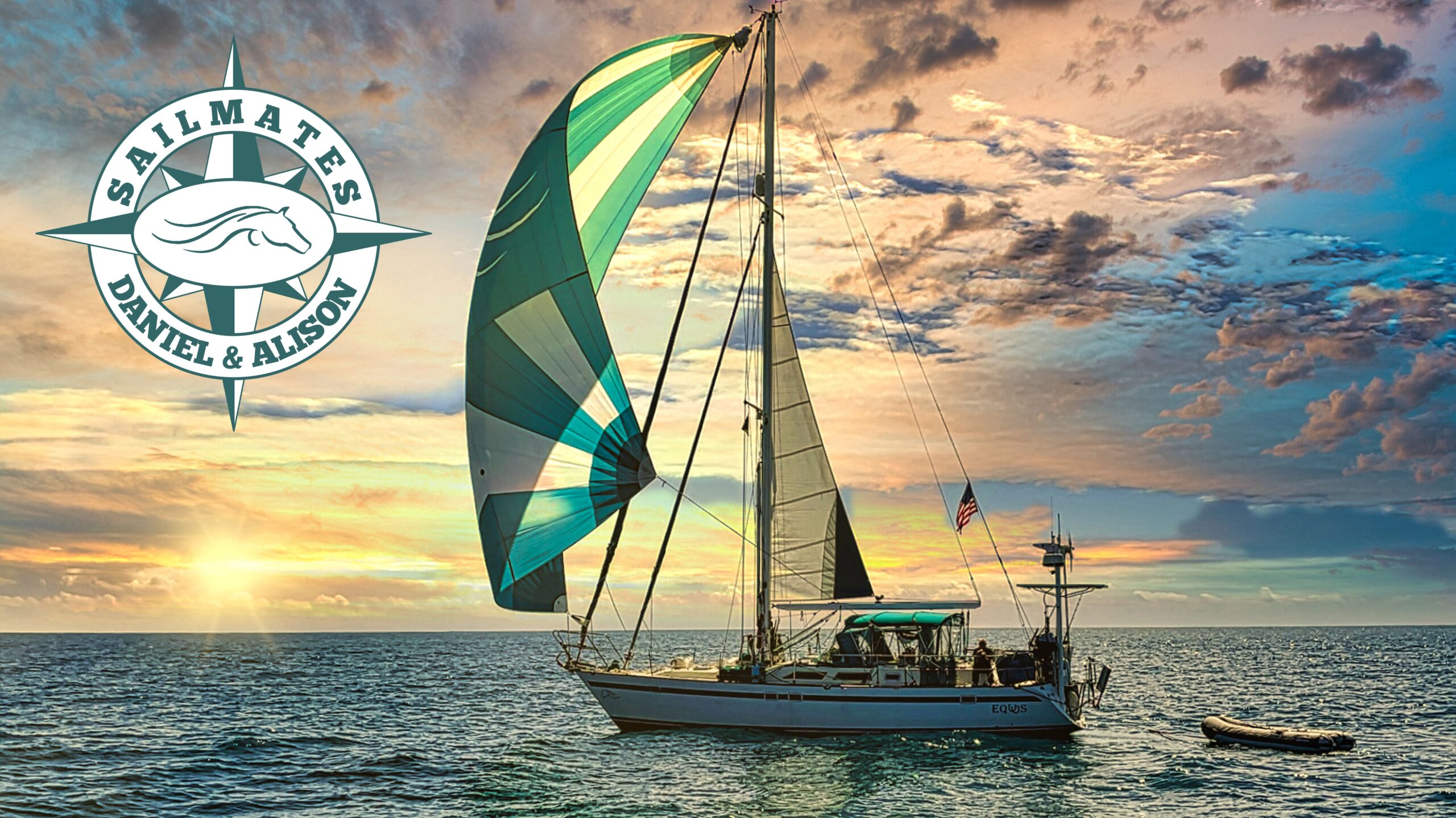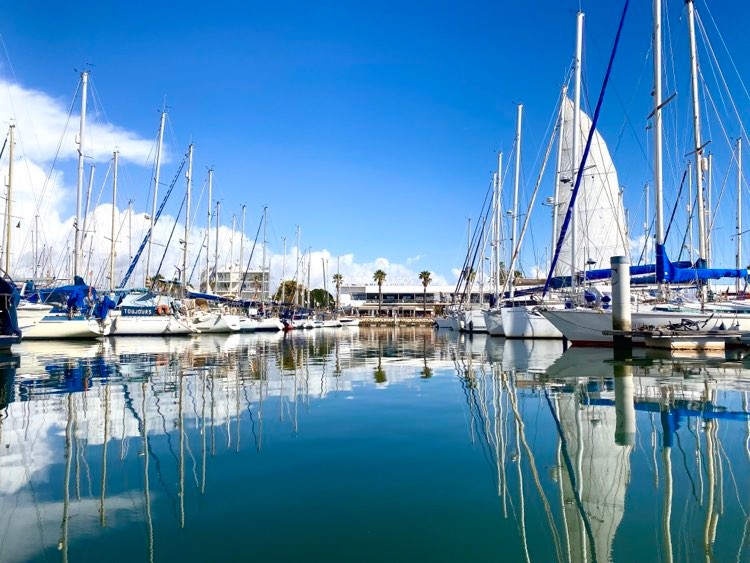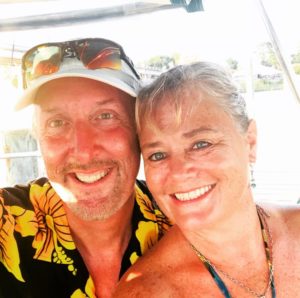“Sometimes life gives you obstacles. Obstacles that may seem unfair or too extreme. But you are given choices. Break through the obstacles or let the obstacles break you.”
Anonymous
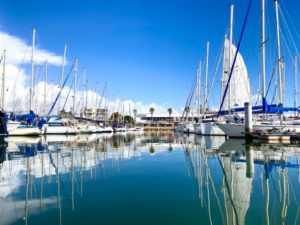
To provide a brief recap, as wind and waves increased, contrary to the weather predictions, we tried to reef our mainsail. That’s when we suffered a catastrophic failure of our in-mast roller furling system. A day into our journey, it broke in half, inside the mast. This prevented us from not only reefing our mainsail, but also from being able to take it down.
Dan went out on deck with his safety line keeping him from being thrown from the deck. With great difficulty, he wrestled the billowing main into sections that he could secure to the boom and mast. We promptly tacked back toward shore using just our jib, and in another 24 hours, arrived in Lagos, Portugal where we knew we could find repair options.
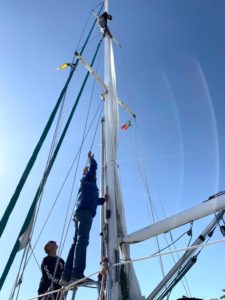
Our children, our grandson Orion (almost 7), and our two new grandbabies, Carter and Elaine who were born last December and April, are traveling to the D.R. for a holiday reunion on January 8th. We will be spending a glorious week together at a resort where we will celebrate the holidays and Orion’s 7th birthday. Our passage plans were all being driven to arrive in the D.R. before January 8th.

The icing on the cake after facing the realization that we would not be able to make our passage was that we still have to get there, somehow. I refuse to miss seeing my new grandbabies, holding them, kissing those cubby little cheeks, and spending precious time with my family. The logistics of flying to the D.R. are rather complicated. We have to rent a car, drive several hours to Lisbon, then hop on a plane. More unplanned expenses. Our motto kicked in: when obstacles do arise, you simply change the direction to reach your goal, you don’t change the decision to get there.
The Great Demasting
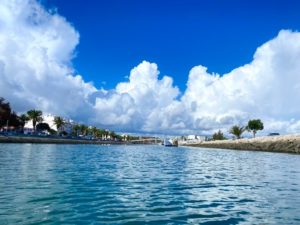
Normally, this is a rather simple process. Many people take their masts off every winter if they live in climates with very cold, windy, inclement weather, like Scotland. When we were in a marina in Scotland last October, there were dozens of boats already pulled out of the marina for the winter. Every one of them had the mast removed and stored. This is not a common procedure where we come from in the Chesapeake Bay. We guessed that due to high winds it’s preferable to take the mast off and store it safely rather than to subject it to the constant stress of heavy wind.
There is a plethora of reasons why you might need to take your mast off your sailboat. Some of them include:
- Removal to go under a bridge
- Winter storage
- Repairs
- Any topside clearance issues
- Maintenance (recommended every 5 years)
- Lightning strike
- Unintentional, shroud breaks and it demasts itself
That being said, taking our mast off should have been a simple procedure. However, if there is one thing we’ve learned about our fickle sea pony, s/v Equus, it’s that she is very much a mare. When she goes willingly, she is a thing of beauty. When all her sails are up, the wind is just right, the sun is shining, she soars with delight. However, when a recalcitrant mood strikes her, you better hang on tight.
Our girl did not want to give up her mast. She would not do so without a fight. Part of it was not her fault. When we purchased her five years ago, we never asked when the last time the mast was removed. The rigging had been replaced recently, so we assumed mast maintenance was part of that process. Silly us.
We knew there were issues with the roller furler as we often had difficulties getting the sail out. Dan would sometimes have to tug on it while I cranked the winch. Also, the base of the mast would leak water into the boat when there was wind and heavy rain coming from a certain direction. These were known issues, but like everything on our 30-year-old boat, nothing works perfectly.
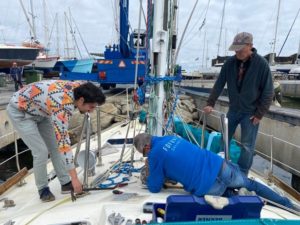
Dan saved us some time and money by disconnecting all the wiring from the mast. Many wires for the navigation and instrumentation run to the top of the mast. He had everything disconnected, labeled, and neatly bundled so the mast removal could proceed quickly and smoothly.
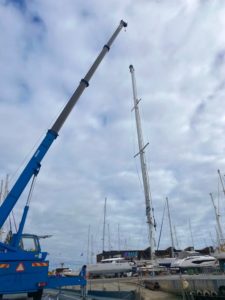
The moment of truth came. Dan stood on front and held the cables to our forestays, so they wouldn’t drag and scratch the deck as they lifted up with the mast. I went down below to make sure the mast pulled out smoothly and didn’t damage anything.
“Go!” was yelled in Portuguese. The crane began putting pressure on the strap. The mast began groaning. Popping noises exploded around the mast, a horrible crackling sound emanated from its root. The entire boat lifted slightly, but the mast refused to budge.
“Stop!” was yelled in Portuguese. The process halted.
The men used pry bars, mallets, and other various instruments to try and loosen the mast from her grip on our ship.
This process repeated two more times. Each time, the crackling, popping and groaning got worse. The crackling and popping from the boat, the groaning from me. I thought for sure our deck was going to be ripped out with the mast.
Tensions were high. This simple process had turned into a dilemma. Antonio decided to unbolt the metal collar around the mast, which normally did not have to be done, and remove the mast with the collar attached. It took a half an hour for the men to loosen those bolts.
Repeat lifting process. The mast still wouldn’t budge. I began to get distraught. How could this simple process be such an issue? Was it our boat, our bad luck, or the “mare” in our vessel rearing her ugly head?
The helper came down into the cabin several times to check something, I wasn’t sure what. Finally, he yelled through the hatch to Antonio. It was like a bad sketch. He would yell, Antonio would yell back. He would yell louder; Antonio still couldn’t hear him. After three attempts, he finally stuck his head through the hatch and explained in Portuguese that he had found the problem.
Victorious are the Persistent

As we held our collective breaths, the crane applied pressure to lift the mast. There was a pregnant moment when the popping, cracking, (and me moaning) ensued for a few seconds… then, the mast groaned one last time, but finally released and raised into the sky, a free spirit taking flight. We all exhaled, breathing a sigh of relief.
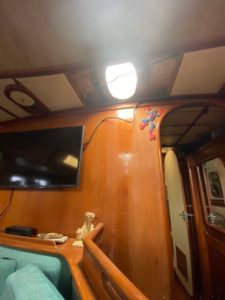
Another issue we are facing is shipping the new furler parts. Being that they are six meters long, shipping will not be routine. Antonio informed us that the parts are in stock, but the shipping is going to cost more than the parts themselves. While the mast is out, my groaning continues…
Future Sailing Plans
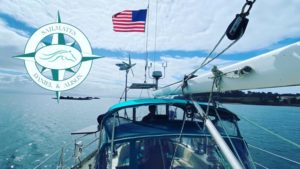
When we return, assuming we have our mast repaired and reinstalled by then, we will reassess the global situation. We will see what countries are open to sailboats, (Morocco is still closed after saying they would reopen to sailboats the beginning of December) and keep an eye on weather patterns, then weigh our choices.
The Canaries are my vote, for now, as to where to go after we return in January. We would love to sail down to the Canary Islands and spend the bulk of the winter anchored there. As you might well be aware by now after reading my blog posts, we really don’t control our sailing destiny. This is a journey being dictated by many factors. We aren’t really in control of where and when we go. We just keep moving and try and make the best of each destination.
While there always seem to be obstacles in our way, we do augment our strength every time we overcome those obstacles. We will continue to discover and use the unique potential we have to cope with them in a positive way – no matter how bad the situation might be.
“I certainly don’t regret my experiences because without them I couldn’t imagine who or where I would be today. Life is an amazing gift to those who have overcome great obstacles, and attitude is everything.” Sasha Azevedo
A GIGANTIC “Thank You” to all who have supported us through our current crisis. Our hearts are filled with love and appreciation for all who have sent prayers, well wishes, and financial contributions. If you feel inspired to assist on this journey, helping to keep us afloat and moving forward, you can buy us a beer. Just click the PayPal link below.
Alison and Dan
S/V Equus
Click on the link below to buy us a drink (that really goes toward our new roller furler)!
We will make a toast to you. Leave us your email if you would like us to send you a personalized Equus Happy Hour picture.
PayPal link – BUY DAN AND ALISON A DRINK

